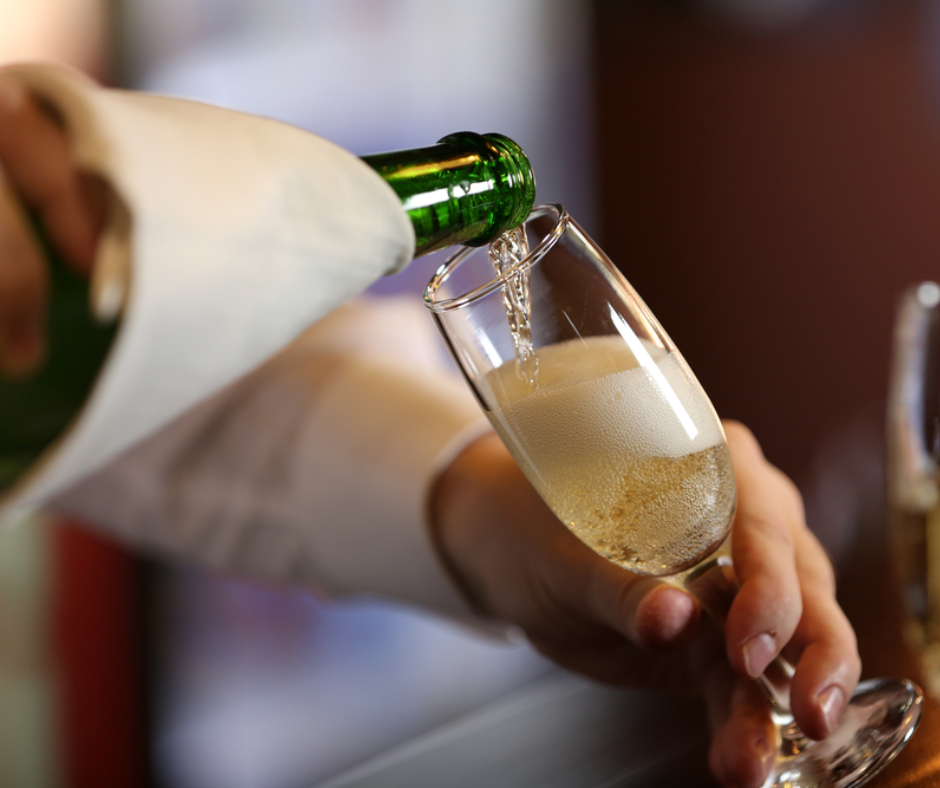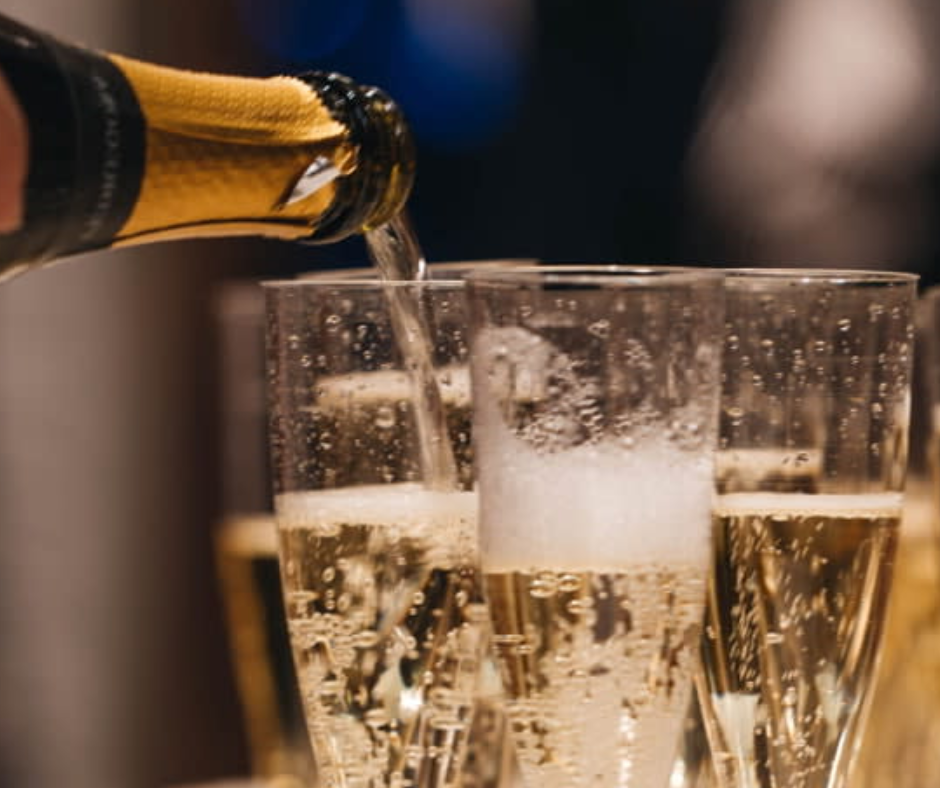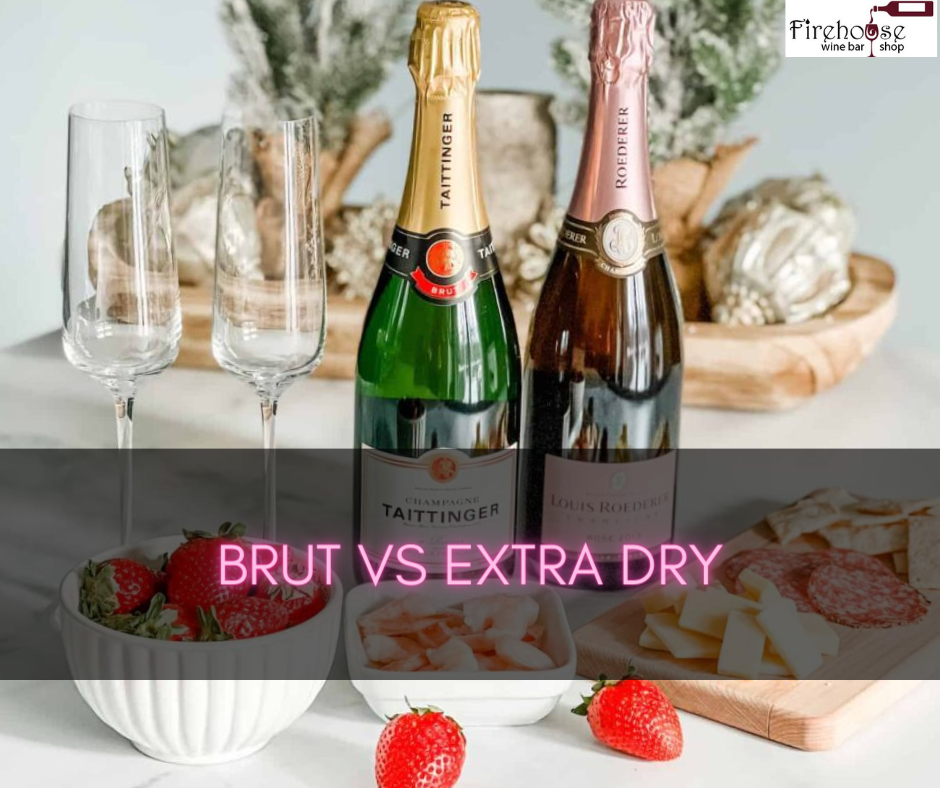Introduction
You may have come across terms like Brut and Extra Dry regarding sparkling wine or champagne. These terms describe the level of sweetness in the wine, but do you know the real difference between them? Understanding the distinction of Brut vs Extra Dry is essential for wine enthusiasts or those planning to purchase.
The Significance Of Understanding The Difference Between Brut And Extra Dry
Knowing the difference between Brut and Extra Dry is crucial, as it allows you to make an informed decision based on your taste preferences. Whether you’re celebrating a special occasion or simply treating yourself, selecting the right bottle of bubbly can enhance the experience. Understanding the sweetness level can help you choose a wine that aligns with your palate and the occasion.
Historical Background Of The Classifications
The terms Brut and Extra Dry originated in the Champagne region of France, known for producing some of the finest sparkling wines in the world. These terms were initially used to describe the residual sugar content in the wines, with Brut being the driest and Extra Dry being slightly sweeter.
Over time, the perception of sweetness has changed, and these classifications have become slightly confusing. Contrary to their names, Extra Dry sparkling wines tend to be drier, while Brut wines have a bit more sweetness, although they are still relatively dry. This can be attributed to historical variations in winemaking traditions and evolving consumer preferences.
Understanding the historical background of these classifications provides context to the wine industry’s traditions and can help demystify the terms for wine enthusiasts.
By familiarizing yourself with the difference between Brut and Extra Dry, you can select the perfect bottle of sparkling wine that suits your taste buds and occasion, ensuring a delightful and memorable experience.

Brut vs Extra Dry
Brut Champagne
For all sparkling wine enthusiasts, it’s essential to understand the nuances between different types of bubbly. One common distinction that often confuses people is the difference between Brut and Extra Dry Champagne.
Definition And Characteristics Of Brut Champagne
Brut Champagne is a classification that refers to the driest style of sparkling wine. It is characterized by its low sugar content and high acidity, which contributes to a crisp and refreshing taste. To be classified as Brut, Champagne must contain less than 12 grams of sugar per liter.
One might assume that “Brut” refers to a rough or harsh taste, but in the world of sparkling wine, it indicates the absence of sweetness. The term “Brut” comes from the French word for “raw” or “unrefined,” signifying the wine’s natural state without added sweetness.
Sugar Levels In Brut Champagne And Its Impact On Taste
The low sugar content in Brut Champagne allows the natural flavors and acidity to shine through. While it may not have the sweetness of other sparkling wines, it offers a more delicate and balanced profile. The dryness of Brut Champagne pairs well with various foods, making it a versatile choice for pairing with seafood, appetizers, or even desserts.
It’s important to note that even within the Brut category, there can be variations in sweetness levels. For example, “Extra Brut” refers to Champagne with a sugar content lower than traditional Brut, while “Brut Nature” has no added sugar.
Understanding the difference when comparing Brut vs Extra Dry Champagne can help you make an informed choice when selecting the perfect bubbly for your celebration. So, whether you prefer a drier and more crisp taste or a touch of sweetness, knowing the characteristics of each will guide you toward the right bottle of Champagne for any occasion.
Extra Dry Champagne
Definition And Characteristics Of Extra Dry Champagne
Extra Dry Champagne is a type of sparkling wine that falls between the sweetness levels of Brut and Sec Champagnes. Despite its name, Extra Dry Champagne is slightly sweeter than Brut Champagne. It is known for its balance of sweetness and acidity, making it a popular choice for those who prefer a hint of sweetness in their sparkling wine.
The term “Extra Dry” refers to the level of sugar dosage added to the Champagne during the winemaking process. It contains between 12 and 17 grams of sugar per liter, making it drier than Sec Champagne but sweeter than Brut. This delicate balance results in a pleasant sweetness without overwhelming the natural flavors of the wine.
Higher Sugar Content Compared To Brut Champagne
While Extra Dry Champagne is not as sweet as Sec Champagne, it has a higher sugar content than Brut Champagne. Brut Champagne is known for being drier, with a sugar dosage of around 6-12 grams per liter. On the other hand, Extra Dry Champagne offers a touch more sweetness without being overly sweet.
The additional sugar in Extra Dry Champagne provides a softer mouthfeel and enhances the fruitiness of the wine. It is a versatile option that pairs well with various foods, from appetizers to main courses. The slight sweetness can balance out dishes with richer or spicier flavors.
In conclusion, Extra Dry Champagne offers a balance of sweetness and acidity, making it a popular choice for those who prefer a hint of sweetness in their sparkling wine. With a higher sugar content than Brut Champagne, it provides a softer mouthfeel and enhances the fruitiness of the wine. Extra Dry Champagne is a versatile and delightful option, whether celebrating a special occasion or enjoying a bubbly glass.

Comparing Brut And Extra Dry
Taste Comparison Between Brut And Extra Dry
Brut and Extra Dry are terms commonly used to describe the sweetness levels of sparkling wines, particularly Champagne. Despite their names, these terms can be quite confusing, as they do not directly correlate to the actual taste of the wines. Here’s a breakdown to help you understand the comparison of Brut vs Extra Dry:
- Brut: Unlike its name, Brut is a dry sparkling wine with minimal sweetness. It is the most popular and widely available style of Champagne. When you taste a Brut, you’ll notice crisp acidity, citrus flavors, and a clean, refreshing finish. It pairs well with a wide range of foods and is often enjoyed as an aperitif.
- Extra Dry: Don’t let the name fool you, as Extra Dry is sweeter than Brut. It falls in the middle of the sweetness spectrum, with a touch more residual sugar than Brut. Extra Dry sparkling wines have a slightly richer and fruity taste than Brut, with notes of ripe fruit, honey, and a slightly softer mouthfeel. This style pairs well with salty or spicy dishes.
Factors To Consider When Choosing Between The Two
When deciding between Brut and Extra Dry sparkling wines, there are a few factors to consider:
- Sweetness preference: If you prefer a drier taste, opt for Brut. Extra Dry might be more to your liking if you enjoy a touch of sweetness.
- Food pairing: Consider the type of food you’ll be serving. Brut’s crisp acidity pairs well with various dishes, while Extra Dry’s hint of sweetness can complement saltier or spicier flavors.
- Occasion: Brut is versatile for celebrations, toasts, or casual sipping. Extra Dry can add a slightly sweeter touch to special occasions or desserts.
Remember, the sweetness levels in sparkling wines can vary slightly depending on the producer, so it’s always a good idea to read the label and seek recommendations from knowledgeable wine professionals to find the style that suits your taste.
Exploring The Confusion
The terms “Extra Dry” and “Brut” may seem puzzling and potentially interchangeable for wine enthusiasts. However, understanding the difference between these two popular sparkling wine styles can enhance your appreciation and enjoyment of bubbly beverages.
Reasons Behind The Confusion Between Extra Dry And Brut
- Misleading terminology: “Extra Dry” and “Brut” imply sweetness levels contradictory to their meanings. Extra Dry refers to a moderately sweet taste, while Brut indicates a drier style. This discrepancy in terminology can lead to confusion.
- Varying sweetness levels: Different wine regions and producers may interpret sweetness levels differently. This variation adds to the confusion and makes it essential to understand the specific sweetness scale used by a particular brand or region.
Debunking Common Misconceptions
- Extra Dry is not “extra sweet”: As mentioned earlier, Extra Dry does not mean an exceptionally sweet taste. Instead, it falls in the moderately sweet category. The sweetness level of Extra Dry falls between the drier styles of Brut and the sweeter styles like Demi-Sec or Doux.
- Brut does not mean “brutally dry”: While Brut indicates a drier style compared to Extra Dry, it still contains a touch of sweetness. Brut sparkling wines balance fruity and crisp flavors, making them versatile for pairing with various cuisines.
Understanding the terminology and sweetness levels of Extra Dry and Brut can help you make informed choices when selecting wines for special occasions or casual gatherings. Remember that individual taste preferences might also influence your selection.
By decoding the differences between Extra Dry and Brut, you can confidently navigate the sparkling wine section and savor each style’s unique characteristics. So, raise a glass and enjoy the bubbly battle between Extra Dry and Brut!

Expert Insights And Recommendations
Expert Opinions On Brut And Extra Dry Champagnes
Regarding sparkling wines, two popular types that often confuse consumers are Brut and Extra Dry. Understanding the difference between the two can enhance your wine-drinking experience and ensure you make the right choice for your palate. We have sought the expertise of sommeliers and wine connoisseurs to shed light on the matter.
Experts say Brut Champagne is known for its dryness but has a hint of sweetness. It is the most common type of Champagne and has a sugar content of less than 12 grams per liter. This makes it versatile and pairs well with various foods, from fish and seafood to poultry and creamy desserts. Brut Champagne is often recommended for celebrations or as an aperitif.
On the other hand, Extra Dry Champagne is slightly sweeter, with a sugar content ranging from 12 to 20 grams per liter. It offers a delicate balance between dryness and sweetness, making it suitable for those who enjoy a hint of sweetness in their bubbly. Experts suggest pairing Extra Dry Champagne with mildly spicy dishes, sushi, or fresh fruits. It can also be enjoyed as a refreshing drink on its own.
Food Pairings And Occasions For Each Type
Regarding food pairings, experts recommend considering the intensity of flavors in your meal. Brut Champagne is a great choice for lighter dishes, such as salads or seafood, as it complements the delicate flavors. With its slightly sweeter profile, Extra Dry Champagne pairs well with richer dishes like duck or aged cheeses.
Regarding occasions, Brut Champagne is a versatile option that can be enjoyed on its own or during celebratory events. Its dryness and balanced acidity make it a popular choice for toasting. Extra Dry Champagne, with its touch of sweetness, is often preferred for casual gatherings or as a dessert accompaniment.
Understanding the difference between Brut and Extra Dry Champagnes allows you to confidently select the right sparkling wine for any occasion or meal. Whether you prefer a drier profile or a hint of sweetness, both offer unique characteristics to enhance your enjoyment.
Conclusion
When it comes to Champagne, understanding the difference in comparing Brut vs Extra Dry can help you make the right choice based on your personal preferences.
Recap Of The Key Differences Between Brut And Extra Dry
Brut and Extra Dry are commonly used terms to describe Champagne, but they refer to different sweetness levels in the wine.
- Brut: Brut Champagne is the most popular and widely available style. It is considered dry, but it still has a hint of sweetness. Brut Champagnes typically have a sugar content of less than 12 grams per liter.
- Extra Dry: Despite its name, Extra Dry Champagne is slightly sweeter than Brut. It has a sugar content ranging from 12 to 17 grams per liter. Extra Dry Champagne is a good choice for a slightly sweeter taste.
Choosing The Right Champagne Based On Personal Preferences
Choosing between Brut and Extra Dry Champagne ultimately comes down to personal taste. Brut Champagne is the way to go if you enjoy a drier and less sweet wine. On the other hand, if you prefer a wine with a touch of sweetness, Extra Dry Champagne might be more to your liking.
It’s important to note that Champagne can vary in taste and sweetness levels even within the same style. It’s always a good idea to read the label or seek recommendations from a knowledgeable wine professional to ensure you select a Champagne that suits your taste buds.
In the end, whether you prefer the crisp and dry profile of Brut or the slightly sweeter taste of Extra Dry, both styles offer a delightful effervescence that can elevate any celebration or special occasion. Cheers!
FAQ: Bubbly Battle – Understanding the Difference Between Brut and Extra Dry Champagne
Q: What is the difference between Brut and Extra Dry Champagne?
A: The main difference lies in their sweetness levels. Brut Champagne is known for its dryness and crispness, while Extra Dry Champagne offers a touch of sweetness and roundness.
Q: Which style of Champagne is more commonly consumed?
A: Brut Champagne is widely recognized as the most common and widely consumed style of Champagne.
Q: Is Brut Champagne drier than Extra Dry Champagne?
A: Yes, despite its name, Brut Champagne is actually drier than Extra Dry Champagne.
Q: How does Extra Dry Champagne taste compared to Brut?
A: On the palate, Extra Dry Champagne presents a balance between sweetness and acidity, providing a softer and more rounded mouthfeel compared to Brut Champagne.
Q: What factors should I consider when choosing between Brut and Extra Dry Champagne?
A: Ultimately, it boils down to personal taste and preference. Consider your sweetness preference – if you enjoy bone-dry wines with minimal sweetness, opt for Brut Champagne. If you prefer a touch of sweetness, Extra Dry Champagne may be more suited to your taste.
Q: Can both Brut and Extra Dry Champagne enhance celebratory moments?
A: Yes, both styles have their unique qualities and can enhance your celebratory moments. Whether you prefer the dryness and crispness of Brut Champagne or the sweetness and roundness of extra-dry champagne, they can pair beautifully with various culinary delights.
Q: Are there any specific occasions where I should choose Brut or Extra Dry Champagne?
A: The choice between Brut and Extra Dry Champagne can be based on personal preference and the occasion. Brut Champagne is often favored for its versatility and ability to pair well with a wide range of foods, while extra-dry champagne can be a delightful choice for those who enjoy a touch of sweetness in their bubbly.
Q: Can you recommend any food pairings for Brut and Extra Dry Champagne?
A: While pairing is subjective, Brut Champagne’s dryness makes it a great match for seafood, oysters, and light appetizers. Extra Dry Champagne’s touch of sweetness can complement desserts, foie gras, or spicy Asian dishes.
Q: Are there any other styles of Champagne apart from Brut and Extra Dry?
A: Yes, there are several other styles of Champagne, such as Demi-Sec (off-dry), Sec (medium-dry), and Doux (sweet). These styles offer varying levels of sweetness, catering to different preferences.
Q: Is there a significant price difference between Brut and Extra Dry Champagne?
A: The price difference between Brut and Extra Dry Champagne can vary depending on the brand, region, and other factors. It’s advisable to compare prices and explore different options to find one that suits your budget while satisfying your taste preferences.

Andre Lotz immigrated to the United States from South Africa almost 20 years ago. Still, he didn’t feel truly at home until he settled in Mobile—a city that reminds him of his childhood home of Fish Hoek on the southern cape of Africa.

